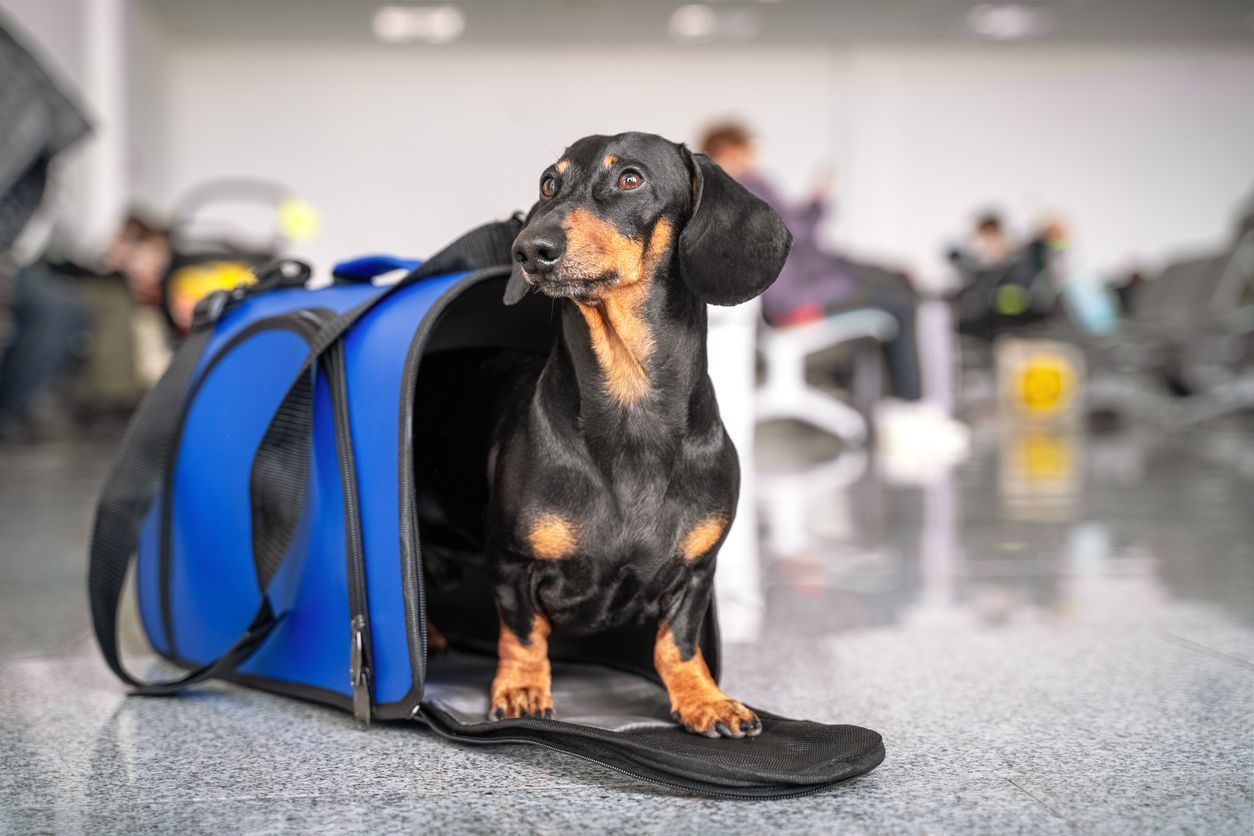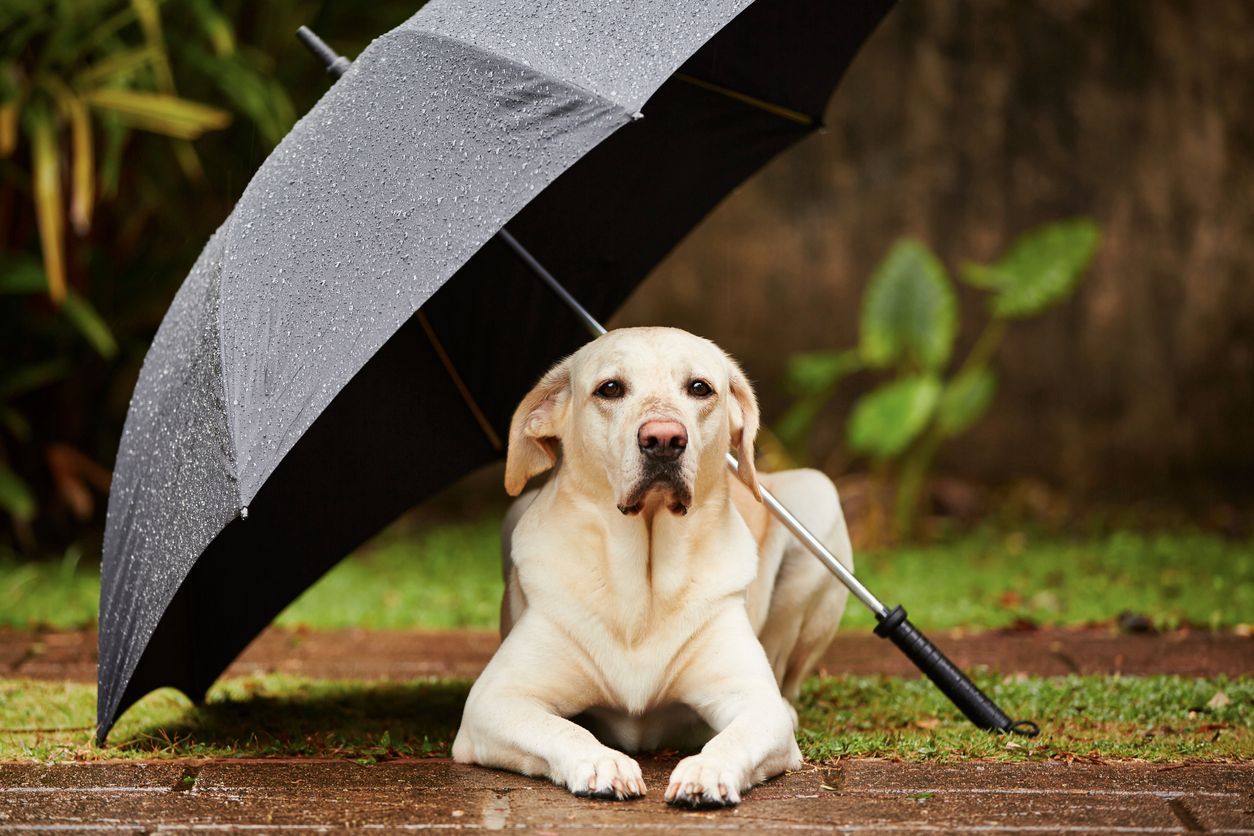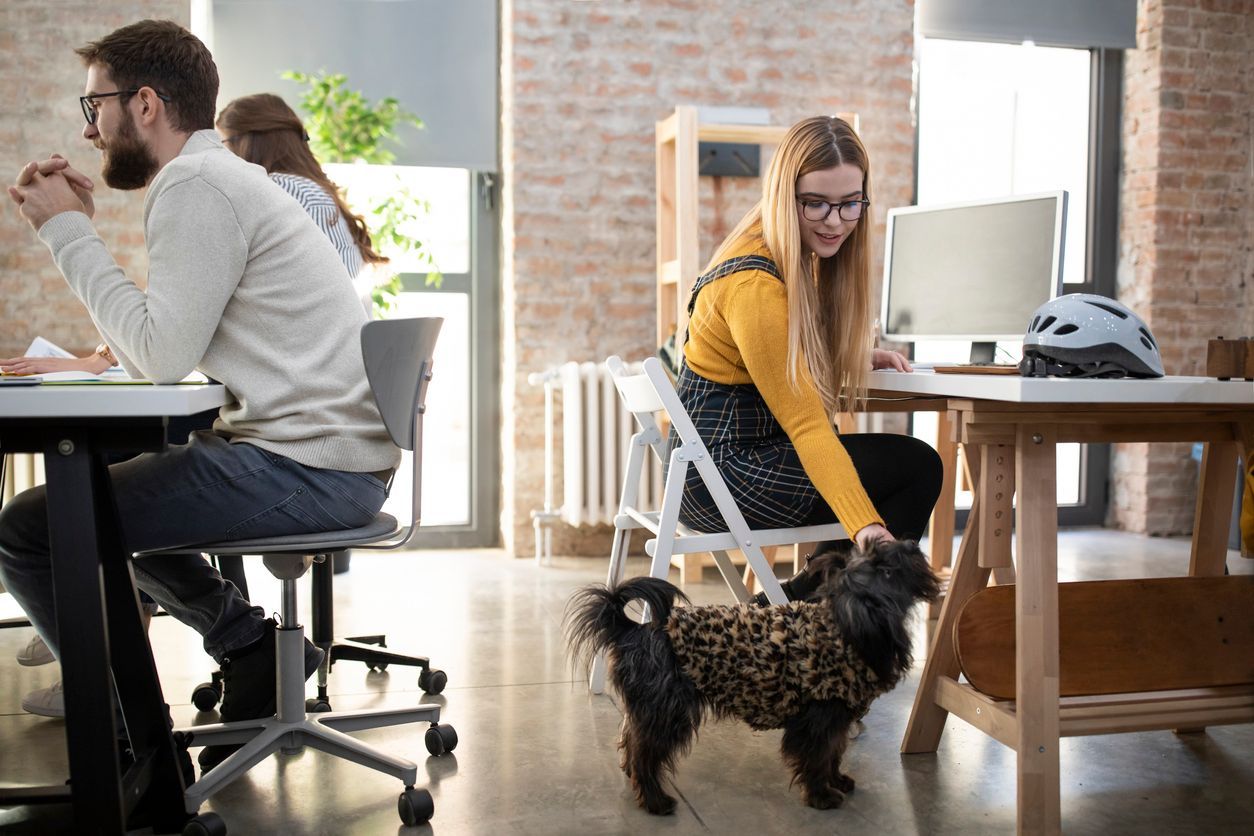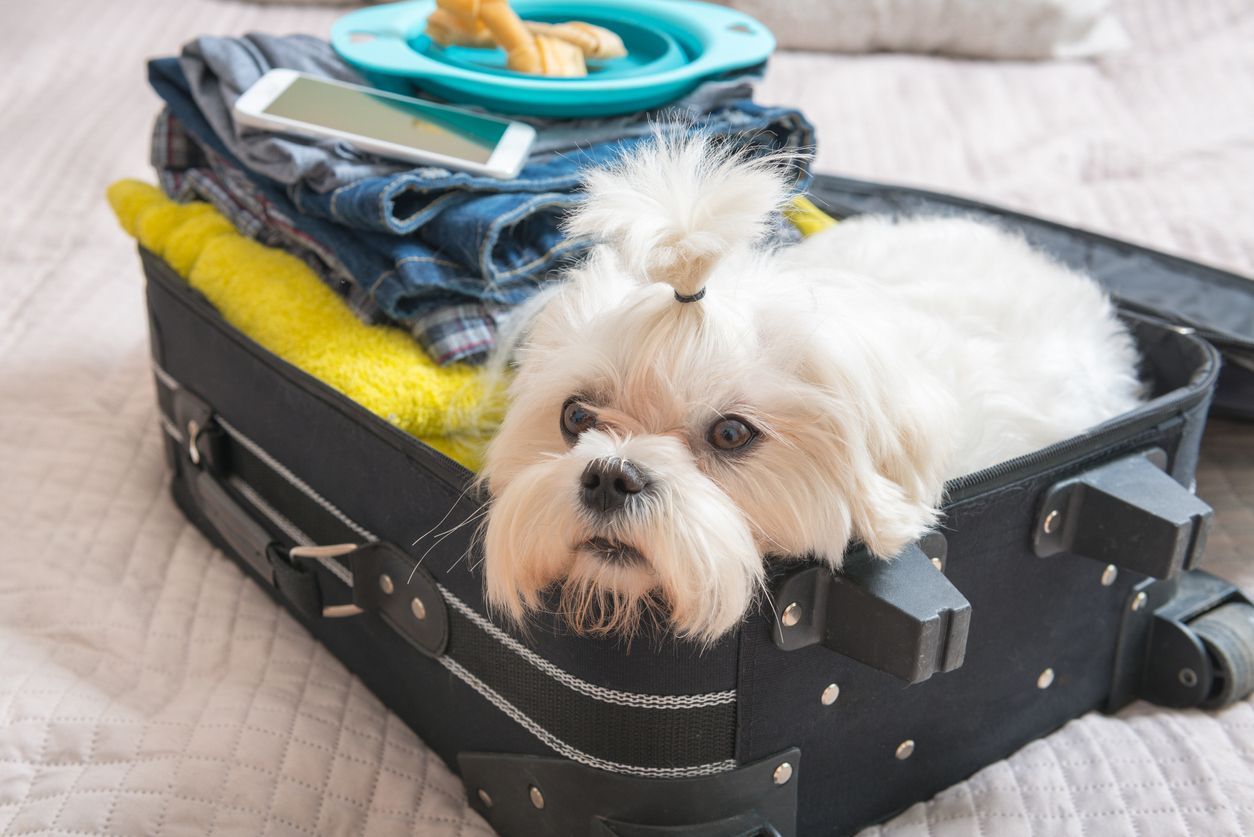From takeoff to touchdown: How to travel with a dog by plane

Sometimes you have to travel with your dog. And you don’t always have the luxury—if that’s what you’d call it—of taking a long road trip or crawling along by train or boat.
That leaves flying, and that may have you worried. Can you take your canine pal aboard a plane? Under what conditions? Is it a good idea?
Happily, there are many pet-friendly airlines, and more and more are easing policies that once relegated pets to only the cargo hold.
So you want to know how to travel with a dog? Let’s get started.
Before you book
Before you lock down those tickets, take note that each airline has its own pet policy. And while these vary somewhat airline to airline, a few policies apply across the board.
Dog breed restrictions on planes
Airlines recommend against traveling with brachycephalic breeds due to their increased risk of experiencing adverse respiratory events in a pressurized cabin. In fact, some airlines refuse to take this risk, and ban brachycephalic breeds from traveling aboard their aircrafts altogether.
Be sure to confirm that your breed is allowed on the plane, especially if you’ve got (among others) a:
- Pug
- King Charles spaniel
- Bulldog
- Shar Pei
Breed restrictions can be frustrating, but they’re in place to protect your best buddy during travel.
With the exception of trained service dogs, most airlines insist that your dog fit in a carrier below the seat in front of you. The precise dimensions of this carrier vary by airline, but in general they’ll hold a dog of up to 20 lbs., which is often an airline’s pet weight limit. That largely precludes large-breed dogs from flying in-cabin.
The good news is that in-cabin travel is more breed-restrictive than cargo travel is. So if you’re willing to go that route, your larger-breed dog can still come along. It’s important to note that traveling in cargo will likely be more stressful for your dog and does come with some risk of extreme temperatures and poor handling.
Where does my dog sit on a plane?
Unfortunately, your teacup poodle won’t be granted their own seat beside you in first class. Dogs flying in-cabin must be kept in a carrier that fits beneath the seat in front of you.
An exception is made for service dogs who, depending on the airline, may sit unkenneled at your feet or in a seat next to you. Some airlines allow these dogs to fly for free; others insist you purchase an additional seat for them.
Other considerations
If you plan to travel with your dog, you’ll need to consider whether you’re flying direct or if you have a layover (or two). Certain airlines charge additional pet travel fees when you change planes. Others have flight-length limits, meaning that pets sometimes aren’t allowed aboard flights scheduled to take longer than 12 hours.
Also keep in mind that dogs can be turned away at the terminal for certain health conditions or misbehavior at the discretion of airline staff. This misbehavior includes:
- Excessive barking or whining
- Incontinence
- Snapping or biting
- Refusing to stay in their carrier
- Being excessively or offensively odorous
In general, dogs must be well-behaved, obedient, and calm to board a plane — just like human passengers.
Before you fly
Air travel takes a good bit of planning whether or not you’re bringing your dog. In a sense, everything you bring for yourself you have to bring a dog version of for them — plus additional dog-specific items.
Visit your vet
Many airlines require you to present your dog’s health certificate to airline staff at the check-in counter. They’ll need to see that your dog’s vaccinations are up to date and that any health conditions have been cleared for air travel by a veterinarian.
If your dog takes regular medication, make sure they have enough to get through your travel period. And if your dog is a nervous traveler, you may want to discuss a small prescription for a sedative.
Your vet can help you evaluate your dog’s temperament, determine if a sedative is truly necessary, and review any potential side-effects.
Choose a travel carrier
Your dog’s carrier must meet certain size requirements in order for your pup to travel with you in-cabin. Delta Airlines, for instance, insists carriers be no larger than 18” x 11” x 11”. United Airlines’ soft-sided carrier dimension requirements are the same.
For pets traveling cargo, kennel dimensions are somewhat larger, as many people choose to fly large-breed dogs this way. American Airlines, for instance, allows kennels as tall as 63” in a standard Boeing jet. This is generous considering that they consider a “giant” dog kennel to measure 48” x 32” x 35”.
Regardless of an airline’s specific size requirements, all carriers must be ventilated and large enough for your dog to comfortably sit, stand, and turn around in. This is probably more room than you have on a plane these days, so don’t worry: your furry pal is plenty comfortable. Dogs are not allowed out of their carriers at any time, either in cargo or in-cabin.
What to pack
In addition to medications and vet documentation, you’ll want to be sure you pack the essentials, even on a short flight:
- Food
- Water
- Pee pads
- Doggie bed
- Calming collar or shirt
- Toys
- Chews
- Identification
- Collar and leash
Make a list and check it twice: the one thing you forget to bring is the only thing your dog will want.
Going through airport security with a dog
Dogs traveling cargo are usually dropped off at the baggage counter making the process quite easy. And going through airport security with a dog isn’t much more difficult than it is without one. It’s still the relatively unpleasant task you know and love, but this time you’ll have a furry friend nearby, making things a bit more enjoyable .
Per the TSA’s website, you’ll first take your dog out of their carrier and place the carrier on the X-ray machine belt. You’ll then walk through the metal detector and body scan module with your pet in your arms. That’s it.
Keep in mind that you’ll be doing all this while emptying your pockets, removing electronics from carry-ons, taking off your shoes, and fielding comments about how adorable and well-behaved your dog is.
Keeping your dog comfortable during flight
Even for a well-traveled dog, flying can be uncomfortable, stressful, and just downright boring. You’ll have to do your best to keep them comfortable, while strictly observing certain airline restrictions.
Getting a calming collar or calming chews may help. A favorite blanket or familiar toy can work, too.
Unfortunately, dogs can’t be let out of their carriers for any reason and should not be fed aboard the plane. This means that meals and potty breaks will have to take place before boarding — sometimes quite a trial when you’ve got an excitable or nervous dog.
Most vets recommend you don’t feed your dog for several hours before your flight as this helps to reduce nausea and vomiting incidents.
After you land
When traveling internationally, it’s not a bad idea to leave your dog in their kennel until you’ve cleared customs or left the airport. Depending on your destination, you may need to present proof of vaccination upon landing, and requirements vary by state and country.
Then, hopefully, the hard part is over. All that’s left is for you and your pooch to taxi to the beach and get some sun while eating kibble out of a coconut.
Still have questions about flying with your pup? Book a virtual care appointment anytime, anywhere with Vetster to speak with a veterinary professional about how your dog will fare on a flight. Top-rated vets are available 24/7 and can advise on traveling necessities based on your dog’s breed, health, and temperament.
SOURCES
https://www.delta.com/us/en/pet-travel/overview
https://www.united.com/en/us/fly/travel/traveling-with-pets.html
https://www.aacargo.com/learn/animals-kennel-guidelines.html
https://www.tsa.gov/travel/security-screening/whatcanibring/items/small-pets
https://vcahospitals.com/know-your-pet/flying-with-your-dog-in-the-cabin-of-the-plane



